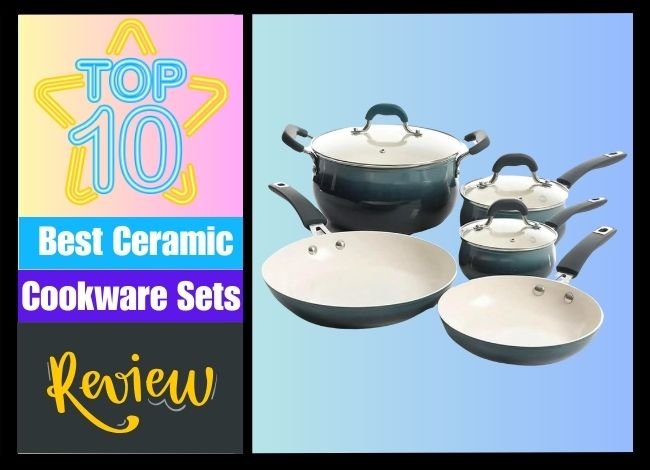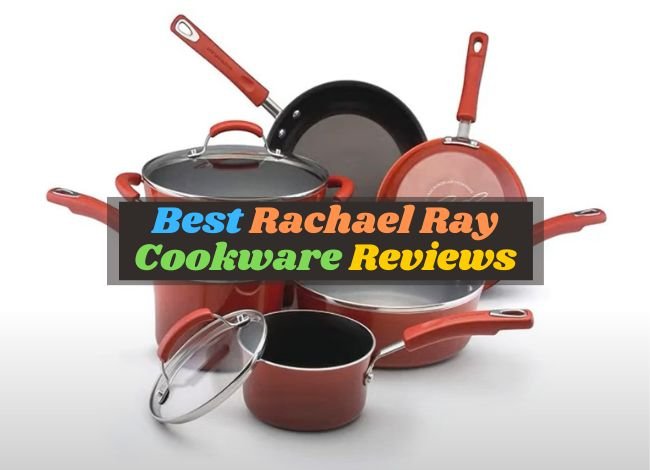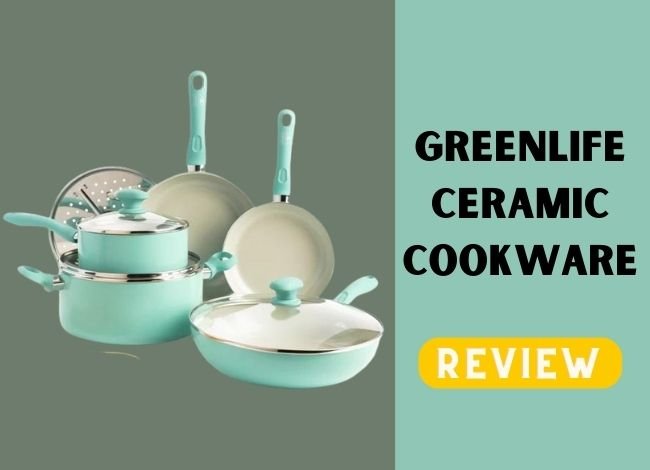Last Updated on December 4, 2023
Ceramic and anodized cookware are popular choices among home cooks due to their non-stick properties and ease of use. In this article, we will compare ceramic and anodized cookware in terms of non-stick performance, heat distribution, durability, maintenance, and price to help you decide which option best suits your needs.
Non-stick Performance: Ceramic cookware features a non-stick cooking surface made of a ceramic coating free of PTFE and PFOA. Ceramic non-stick surfaces are eco-friendly and typically have fewer chemicals than traditional non-stick coatings.
Anodized cookware is made of aluminum that has undergone an electrochemical process, resulting in a hardened, non-porous surface. This process creates a natural non-stick layer on the cookware, without the need for additional coatings.
Heat Distribution: Ceramic cookware heats up quickly and evenly, making it suitable for low to medium heat cooking methods such as simmering, sautéing, and reheating. However, it does not retain heat as well as anodized aluminum cookware.
Due to its aluminum construction, anodized cookware offers excellent heat distribution and even cooking. It is suitable for a wide range of cooking techniques, from low heat simmering to high heat searing and frying.
Durability: Ceramic cookware is less durable than anodized cookware, as it is prone to chipping or cracking if dropped or subjected to sudden temperature changes. However, proper care of high-quality ceramic cookware can still last for many years.
Anodized cookware is more durable than ceramic cookware, as the anodization process creates a hard, scratch-resistant surface. This type of cookware is less prone to warping and can withstand high temperatures and regular use.
Maintenance: Ceramic cookware is low-maintenance and easy to clean, thanks to its smooth, non-stick surface. It can be cleaned with warm water, soap, and a soft sponge, and many ceramic cookware pieces are dishwasher safe.
Anodized cookware is also relatively easy to maintain, as its non-stick surface allows for easy food release and cleanup. However, it is recommended to hand-wash anodized cookware to preserve the non-stick surface and prevent discoloration.
Price: Ceramic cookware is generally more affordable than anodized cookware, with a wide range of prices available depending on the brand and quality.
Anodized cookware is typically more expensive than ceramic cookware, reflecting its superior durability and performance.
Comparison Table:
Feature |
Ceramic Cookware |
Anodized Cookware |
|---|---|---|
| Non-stick Performance | Eco-friendly ceramic non-stick coating | Natural non-stick surface created by anodization |
| Heat Distribution | Quick and even heating, lower heat retention | Excellent heat distribution and even cooking |
| Durability | Less durable, prone to chipping or cracking | More durable, scratch-resistant, and warp-resistant |
| Maintenance | Low maintenance, often dishwasher safe | Easy to clean, hand-washing recommended |
| Price Range | Wide range, from budget-friendly to expensive | Generally more expensive than ceramic cookware |
Conclusion: When choosing between ceramic and anodized cookware, consider factors such as non-stick performance, heat distribution, durability, maintenance, and price. Ceramic cookware is an excellent choice for eco-conscious consumers seeking a non-stick option with quick, even heating, while anodized cookware offers superior durability and performance across a wide range of cooking techniques.
By considering the factors discussed in this article, you can make an informed decision and select the cookware type that best meets your needs and preferences. Some home cooks may even choose to invest in both types of cookware, using ceramic cookware for low to medium heat cooking and anodized cookware for more demanding cooking techniques and higher heat levels.
Investing in high-quality cookware regardless of the material you choose is important. Well-made ceramic and anodized cookware will provide better cooking results and last longer, ensuring that you get the most out of your investment. When selecting cookware, also consider factors such as the brand’s reputation, warranty, and customer reviews to ensure that you are making a smart purchase.
In conclusion, both ceramic and anodized cookware have their own unique benefits and limitations, and the ideal choice will depend on your individual cooking preferences, lifestyle, and budget. By taking the time to research and compare these two types of cookware, you will be well-equipped to make a confident decision and enhance your cooking experience.
Related Post:
- Hard Anodized Cookware vs Stainless Steel
- Calphalon vs. Cuisinart: Which Cookware Is Better?
- Cast Iron vs Ceramic Cookware: Which One Should You Invest In?
- Ceramic vs Stainless Steel Cookware: Which Is Better?
- The Difference Between Ceramic and Traditional Nonstick Cookware




